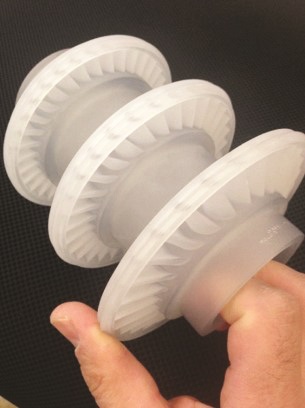Leo~Calicratis
FULL MEMBER

- Joined
- Oct 21, 2014
- Messages
- 106
- Reaction score
- 0
- Country
- Location
I am thinking tooIf it can match the nuclear endurance this system will be a revolution in under water power..
Follow along with the video below to see how to install our site as a web app on your home screen.
Note: This feature may not be available in some browsers.

I am thinking tooIf it can match the nuclear endurance this system will be a revolution in under water power..

And Pakistan ?
A classic example of a country who once taught China how to build ships and then falling from top to bottom in almost all aspects and now is being helped by same China for construction of stuff for its armed forces. The worst part is no one is even concerned about it.

There is a thread about this technology:Is it common to flaunt tech advances like this in newspapers ? I thought this kind advances would be a secret.
Well, since it's "out" in the open, I'll wait for a western newspaper or magazine to post about it before I'll believe it.


There is a thread about this technology:
This Tiny Turbine Could Be the Next Big Thing in Power
Driven by "supercritical fluid," the turbine could someday leave steam in the dust.

GE Global Research
Jet engines may be getting bigger, but power plant turbines might be getting smaller. The tech is still in its early stages but GE Global Research is developing a turbine that—though only the size of the average desk—could someday power entire towns.
Doug Hofer, a steam turbine specialist at GE Global Research, is shown holding a model of the turbine above, a real-size model that is much tinier than common steam turbines that are bigger than you and weigh several tons. And while that may only be a model made of plastic instead of steel, the principle behind it could have a big effect on the future of turbine power.
Instead of being pushed by steam, like most power plant turbines, the "minirotor" as Hofer calls it is pushed by CO2. Not gaseous CO2, or liquid CO2, but CO2 so hot and pressurized that it forms what is called a supercritical fluid, a state of heat and pressure so extreme that the distinctions between liquid and gas basically cease to exist.
The tiny turbine's design is intended to harness the power of this specific (and weird) state of matter which could make the turbines as much as 50 percent efficient at turning heat to electricity, a significant improvement over ~45 percent efficient steam turbines, according to MIT's Technology News. On top of that, these turbines should be relatively easy to spin up or down as demand shifts allowing power plants to more accurately tweak supply on the fly.
The prototype design is a 10 MW turbine, though GE hopes to be able to scale the tech to enough to power a city, somewhere in the 500 megawatt range. The first physical tests are scheduled for later this year.
Source: GE Reports, MIT Technology News

They are going to test it in 2017, so let's wait and see..IMHo they won't make such a claim about research being conducted in the open without some truth to it..Thanks for the link, and it's nice to see there is something on this technology. But I was thinking of western media or tech news reporting that Turkey has taken the lead as the turkish newspaper claims.

Thank you. Now I understand this picture:There is a thread about this technology:
This Tiny Turbine Could Be the Next Big Thing in Power
Driven by "supercritical fluid," the turbine could someday leave steam in the dust.

GE Global Research
Jet engines may be getting bigger, but power plant turbines might be getting smaller. The tech is still in its early stages but GE Global Research is developing a turbine that—though only the size of the average desk—could someday power entire towns.
Doug Hofer, a steam turbine specialist at GE Global Research, is shown holding a model of the turbine above, a real-size model that is much tinier than common steam turbines that are bigger than you and weigh several tons. And while that may only be a model made of plastic instead of steel, the principle behind it could have a big effect on the future of turbine power.
Instead of being pushed by steam, like most power plant turbines, the "minirotor" as Hofer calls it is pushed by CO2. Not gaseous CO2, or liquid CO2, but CO2 so hot and pressurized that it forms what is called a supercritical fluid, a state of heat and pressure so extreme that the distinctions between liquid and gas basically cease to exist.
The tiny turbine's design is intended to harness the power of this specific (and weird) state of matter which could make the turbines as much as 50 percent efficient at turning heat to electricity, a significant improvement over ~45 percent efficient steam turbines, according to MIT's Technology News. On top of that, these turbines should be relatively easy to spin up or down as demand shifts allowing power plants to more accurately tweak supply on the fly.
The prototype design is a 10 MW turbine, though GE hopes to be able to scale the tech to enough to power a city, somewhere in the 500 megawatt range. The first physical tests are scheduled for later this year.
Source: GE Reports, MIT Technology News


